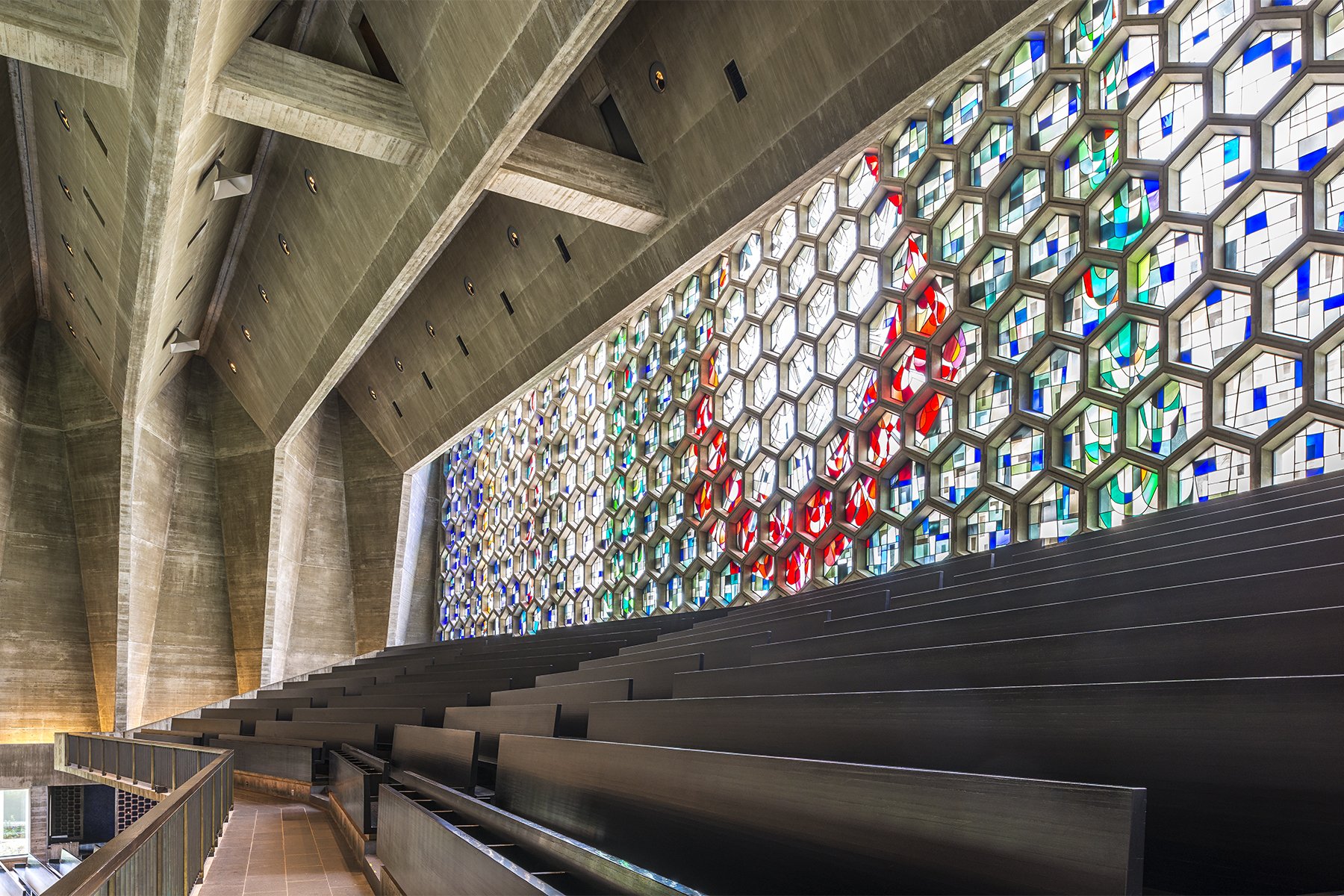Architect Jennifer Yoos on Her Life-Long Experience of St. John’s Abbey Church
As told to Chris Hudson | June 27, 2019
Architect Jennifer Yoos, FAIA, in St. John’s Abbey Church. Photo by Eric Mueller.
SPOTLIGHT
When I was very young, my father was a philosophy professor at St. John’s University for a time, and my mother went to school at the College of St. Benedict. They both took painting courses at St. John’s and were friends with arts faculty there. My father was also close to one of the architects in Marcel Breuer’s office.
As a child, I was always in awe of the abbey church. The combination of the architecture and how it supported the rituals of the church—the monks processing and chanting at night with candles through these spaces, casting incredible shadows on the concrete structures with the candlelight—captured my imagination. The Catholic tradition is very theatrical, and the church is very dramatic in the way it plays with light and shadow and sound, and in the way that it is laid out so that everyone is part of the celebration.
But I didn’t know how unique the church was until later.
I went to college in the 1980s. It was the era of Postmodernism and Deconstructivism, and Brutalism had fallen out of favor. For a while, I was more interested in things that were happening elsewhere. It’s a natural thing that happens as your education progresses: You want to know more about the rest of the world, and you admire things that are unfamiliar and far away.
The older I get, the more I think about the St. John’s leaders who oversaw the changes to the campus in the 1950s, 1960s, and 1970s. They saw this value in modern architecture to represent their highest aspirations as a community.
I worked and attended graduate school in London, which allowed me to travel and experience a number of great buildings in Europe. And something interesting happened: I saw some of Breuer’s work in New York and Paris, and I thought the abbey church was better. That’s when I started to realize how important Breuer’s work was at St. John’s—not just the abbey church but also the spectacular library, the science center, the dormitories, and the monastery.
One of the things I admire about the St. John’s campus is that Breuer and his team designed buildings that rival some of the most ambitious projects that were being done in Europe and the U.S. at the time, and they did it with very modest means while still maintaining that aspiration. The assumption that architects could work at this level using things like chimney-flue tile and other readily made local materials, and using local craftsmen to build a handful of radical concrete structures, is endlessly inspiring to me.
So, on the one hand you have this material modesty, and on the other you have these iconic structures—the church and the bell tower—that you see from a distance in their rural context. And when you enter the church, you feel like you’re in a special place, where every little detail you put your hand on is thoughtfully considered. I am in awe of how the designers were able to create an architecture of this magnitude while still expressing the frugality, humility, and hospitality of the Benedictine tradition.
The older I get, the more I also think about the St. John’s leaders who oversaw the changes to the campus in the 1950s, 1960s, and 1970s. They saw this value in modern architecture to represent their highest aspirations as a community. And they saw what they were doing as investments for multiple generations, as a way to create a community and an identity that would last 100 or 200 years, just as Benedictine leaders did in earlier centuries.
Because of that, you had all these people—monks, architects, local construction workers and craftspeople—who had this enormous obligation to do their best possible work. The level of precision and complexity and detail that’s everywhere around you in this place is truly masterful.
Jennifer Yoos, AIA, is a principal at VJAA.


